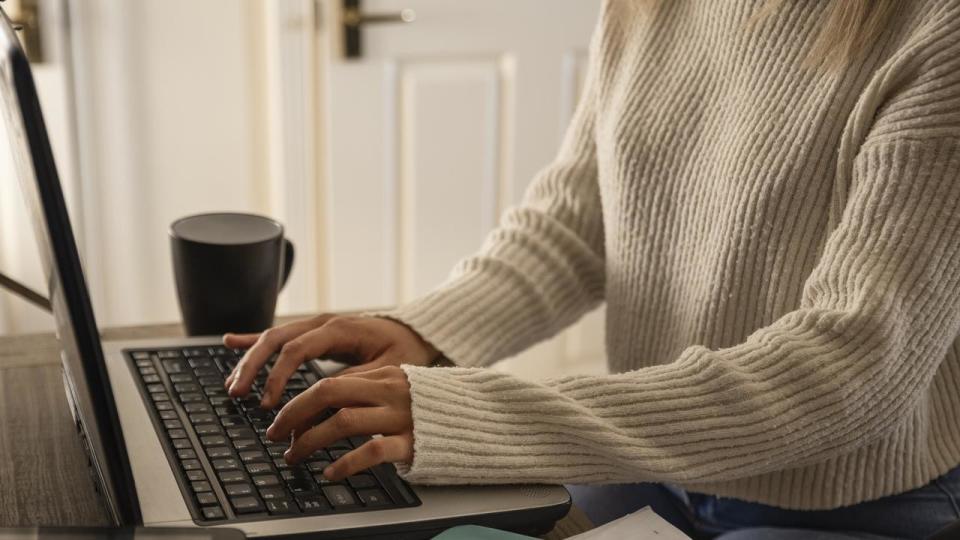Downside to working-from-home revealed

Aussie employees working from home have been left shivering at their desks this winter thanks to high heating costs.
Last week Australia’s east cost was hit with freezing temperatures, as the mercury dropped to a chilly 1.6C in Melbourne and 7C in Sydney.
Workers were left wrapping up in their winter woolies as they prepared to work from home.
Many Aussies complained about working-from-home in frigid indoor temperatures, with cost-of-living pressures causing people to think twice about turning on their heaters and air conditioners.
One Sydney woman shared a video of her wearing an oodie while cowering at her desk was captioned: “Point of view: Attempting to stay warm while wfh in Australian winter because heating is too expensive and we have no insulation”.
Another woman revealed: “Inside my apartment is colder than outside my apartment”.
“I’ve got a full track suit on, ugg boots, this blanket around me, and it’s like negative degrees, and I’m just frozen.”
Another 26-year-old Sydney woman told NewsWire her apartment block gets so cold she’s able to see her breath when the mercury plunges.
“We have a small electric heater but our house is so poorly insulated that the cold air leaches in through the windows,” said the arts sector worker.
“While I’m working from home, I keep the heater right next to my chair and I wear thick socks, thermal layers and a scarf.
“I’m considering putting bubble wrap on the windows because apparently it helps to insulate the windows.”
However, homes with draughty homes with improper insulation amid a cost-of-living crisis, can result to people taking desperate acts just to stay warm.
NSW Tenants Union chief executive Leo Patterson Ross has heard of people of people resorting to risky behaviours such as using outdoor heaters inside, which can lead to carbon monoxide poisoning.
“Particularly for older people, we hear of people who go to bed at 3pm because they can at least stay relatively warm but that means they’re unable to go out and do other things. Even within their homes, they feel confined by the cold,” he said.
While personal heating items such as electronic blankets and electric throw rugs are popular and generally cheaper to run, the cost of the product can be “restrictive”.
“We’re talking about things that might cost more than $100, so people might go without if money’s tight,” he said.
While new homes are built to a much higher energy efficiency standard, with the requirements legislated in the National Construction Code, Mr Patterson Ross said this only applied to a “very small percentage of homes”.
“The vast majority of rental homes are quite aged and often build to a pretty poor energy efficiency standard and there’s nothing lifting them up from that 1950s or 1960s standard.”
He said draftiness and dampness, which can lead to mould, are common concerns, especially among renters.
“A lack of insulation both in terms of building materials, and draftiness through poorly sealed doors and window can make it really hard to keep a place warmed through either sunlight or heating,” he said.
“Windows are the other problem area, especially when they’re single-glazed, and poorly covered – that’s definitely a place that the cold can get in pretty quickly.”

LinkedIn Careers Expert Cayla Dengate said employers could capitalise on the cooler weather to bring more employees into the office.
According to LinkedIn, data published in 2024 suggests nearly half of all Australian employees prefer to work onsite (46 per cent), with only 13 per cent of employees indicating they prefer to work fully remote.
“Companies should consider the changing needs of their employees over the winter months and how they can cater best to them to increase office attendance,” she said.
“For example, with the rising cost of living, Australians are looking to make their pay check go as far as possible so coming into a heated and cozy office, regular catered lunches or allowing employees to expense their travel costs to and from the office can go a long way.”
Winter-themed initiatives including hot chocolate stations, relaxing the dress code, or giving employees branded umbrellas to use in the event of unexpected showers can go a long way to boost morale, Ms Dengate said.
“When it’s cold and raining, the prospect of waiting at a public transport terminal doesn’t exactly feel enticing, but going into the office in winter has its advantages. For one, you don’t have to pay for your own heating,” she said.
“It’s also a great motivator to get up and out of the house on those days when you might otherwise stay in last night’s pyjamas and ugg boots.
“There’s also a kind of camaraderie that comes with braving the elements. When you catch another city worker’s eye as your umbrellas bump, there’s a sense of being in it together.”

 Yahoo Finance
Yahoo Finance 